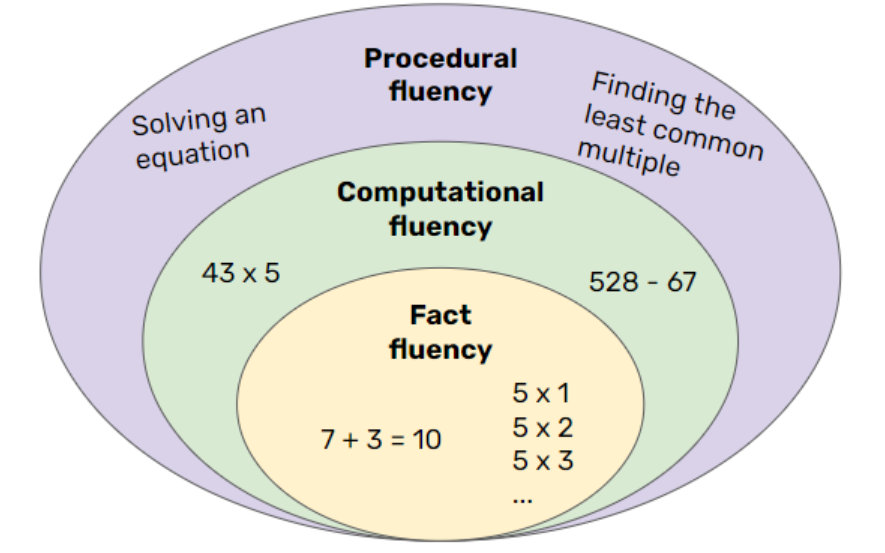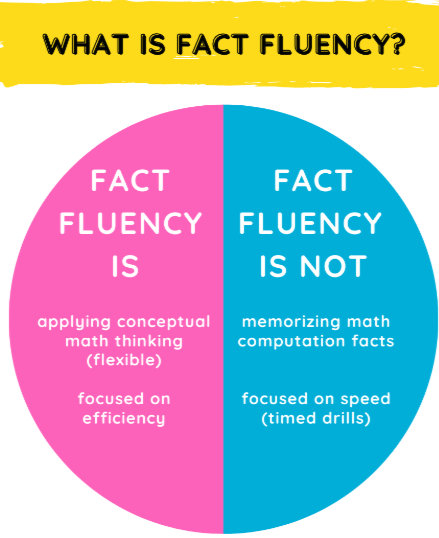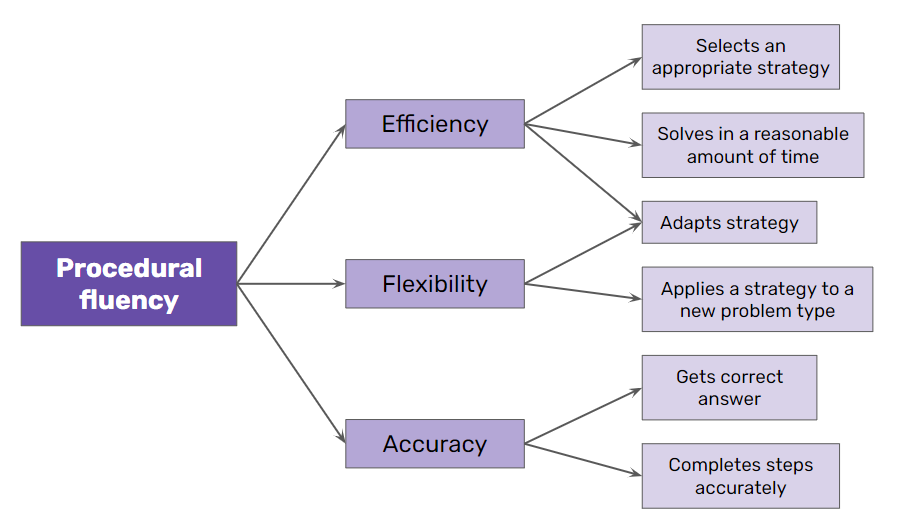Math fluency can be defined as the ability to work with numbers, operations, and procedures with ease. It is the ability to apply procedures efficiently, flexibly, and accurately, including fact, computational, and procedural fluency. Critical end-of-grade-level standards are identified in grades K-8, where fluency should be expected by the end of the grade.
There are three types of fluency in the Iowa Academic Standards for Mathematics. They are:
Fact Fluency - The ability to apply single-digit calculation skills efficiently, appropriately, and flexibly.
Computational Fluency - The ability to perform four operations across different number types, such as whole numbers and fractions, regardless of the number's magnitude.
Procedural Fluency - The ability to carry out procedures accurately, efficiently, flexibly, and appropriately. This includes basic fact fluency, computational fluency, and other procedures, such as finding equivalent fractions. Procedural fluency also applies to multi-digit whole numbers, rational numbers, comparing fractions, solving proportions or equations, and analyzing geometric transformations.

Fact Fluency
Fact fluency is the ability to recall basic math facts, such as addition, subtraction, multiplication, and division, without conscious effort.

It is NOT MEMORIZATION
It is NOT SPEED (TIMED DRILLS)
Computational Fluency
Computational fluency is the ability to perform math calculations using strategies. It's more than just being able to produce correct answers quickly, and it involves conceptual understanding, flexibility, and efficiency. Students who are computationally fluent can use strategies and their existing knowledge to solve more challenging problems.
Flexibility
- Comfortable with more than one approach.
- Choose strategy appropriate for the numbers.
Efficiency
- Easily carries out the strategy, uses intermediate results.
- Doesn't get bogged down in too many steps or lose track of the logic of the strategy.
Accuracy
- Can judge the reasonableness of results.
- Has a clear way to record and keep track.
- Concerned about double-checking results.
Procedural Fluency
Procedural fluency is a mathematical skill that involves knowing procedures, understanding when and how to use them correctly, and being able to perform them accurately, efficiently, and flexibly. It also includes the ability to apply procedures to different problems and contexts, modify procedures based on others, and recognize when one strategy is more appropriate than another.
Procedural fluency, including fact and computational, also attends to the three components of efficiency, flexibility and we can say that it is made up of three components and six related actions that allow us to better understand what we are talking about:

In summary, fluency in the Iowa Academic Standards for Mathematics is a multifaceted skill that extends beyond simple rote memorization. It encompasses fact fluency, computational fluency, and procedural fluency, each playing a critical role in a student's mathematical development. By mastering these elements, students build a solid foundation for solving complex problems and developing a deep understanding of mathematics. As they progress through the grades, these fluency skills prepare them to tackle increasingly sophisticated mathematical challenges with confidence and competence.
Image 1 attribution: https://blog.innovamat.com/en/routine-octahedron-fluency-in-the-classroom
Image 2 attribution: https://positivelylearningblog.com/fact-fluency-for-math/
Image 3 attribution: attribution: https://blog.innovamat.com/en/routine-octahedron-fluency-in-the-classroom